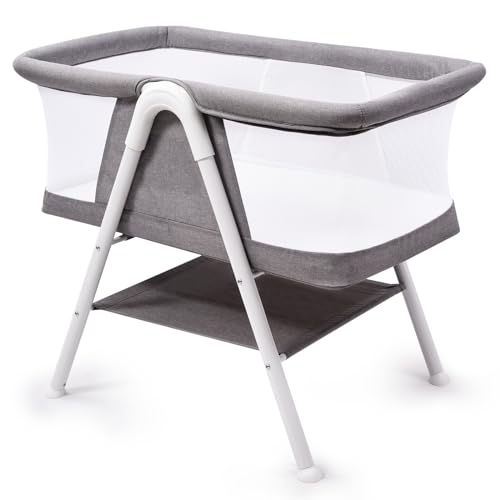Tots and Cots: A Comprehensive Guide for Parents
When it pertains to guaranteeing a safe and comfortable sleeping environment for infants and young children, the options moms and dads make-- ranging from cribs to cots-- can significantly affect their well-being. Today's short article dives deep into the complexities of choosing the very best sleeping arrangements for tots, emphasizing security, design, performance, and how these options develop as a child grows.
Comprehending Tots and Cots
Tots usually refer to children, particularly toddlers aged in between 1 to 3 years, while cots are the sleeping arrangements specifically developed for infants and young children. Tots And Cots sleeping devices for this age group includes numerous kinds of cots, cribs, and toddler beds.
Types of Cots
Different designs exist to fulfill the diverse needs of both parents and kids. Below is a list describing the most common types of cots available:
Standard Crib
- A standard crib is designed for infants and generally consists of sides that can be adapted to different heights.
Convertible Crib
- This type of crib can convert into a young child bed, daybed, or full-sized bed as the kid grows, making it a long-term financial investment.
Portable Crib
- Likewise understood as travel cots, these are lightweight and easily foldable, perfect for traveling or smaller home.
Co-Sleeper
- A co-sleeper crib connects to the side of the moms and dads' bed, allowing for simple access while making sure the baby has a different and safe sleeping space.
Toddler Bed
- A toddler bed is a little bed that resembles a standard bed but is designed particularly for young children, typically including security rails.
Mini Crib
- Mini cribs are smaller sized than basic cribs, making them a terrific alternative for tight spaces, however they appropriate for babies only.
Safety Considerations
Making sure safety is critical when selecting a cot for a child. Here are important security standards parents ought to think about:
- Check for CPSC Certification: Ensure that the cot adheres to the Consumer Product Safety Commission (CPSC) requirements.
- Prevent Drop-Sides: Cots with drop-sides have actually been linked to security hazards, and the current safety policies prohibit them.
- Use a Firm Mattress: A firm bed mattress decreases the risk of suffocation and must fit snugly within the cot.
- Keep Bedding Simple: Use a fitted sheet and avoid pillows, comforters, and packed animals that can pose suffocation hazards.
- Follow Weight and Age Guidelines: Ensure the child has actually not exceeded the cot's weight limit and is still within the advised age.
Transitioning from a Cot to a Toddler Bed
The transition from a cot to a toddler bed can be an emotional milestone for both parents and children. Here are steps to alleviate the shift:
Timing
Deciding when to transition can be subjective, however it's normally recommended to make the switch between 18 months and 3 years, based on aspects like:
- Physical Ability: If the kid is climbing up out of the cot.
- Potty Training: Consider transitioning if the child is potty training and needs much easier access.
- Habits: Exhibiting indications of maturity, such as following directions or revealing a desire for self-reliance.
Tips for Making the Transition Smooth
- Involve Your Child: Let the kid pick their new bedding or bed decor to instill excitement about the change.
- Keep Routine Consistent: Maintain the child's bedtime routine to provide comfort during this duration of change.
- Describe the Change: Discuss the transition to a young child bed positively, making it seem like a terrific experience.
- Precaution: Place the bed versus the wall or usage bed rails to prevent falling throughout sleep.
Choosing the Right Bed
When selecting a toddler bed, moms and dads need to consider factors like:
- Height: Low-profile beds are perfect for young children who might fall out throughout sleep.
- Resilience: Ensure the bed can stand up to active play along with sleep.
- Style and Design: Choose a design that matches the child's space and is appealing to the kid.
Selecting the best cot for your little one can be an overwhelming process, but comprehending the alternatives available, crucial safety factors to consider, and the ideal timing for transitioning to a toddler bed can make this journey simpler for moms and dads. Investing effort and time into these choices will ensure that your child has a safe, comfy, and nurturing sleep environment.
Frequently asked questions
1. What is the difference between a cot and a crib?
- A cot is generally a smaller sized bed created for more youthful young children, while a crib is a larger bed that is generally appropriate for babies approximately 3 years old.
2. When should I move my child from a crib to a young child bed?
- The transition time is typically in between 18 months and 3 years; this modification is based on the kid's physical abilities and behavioral indications.
3. How can I guarantee my child is safe while sleeping?
- Always adhere to security requirements, utilize a company mattress with an easy bed linen arrangement, and keep track of the cot's weight limit.
4. What should I do if my child tries to climb up out of the cot?
- If your child is climbing out, it might be time to think about transitioning to a toddler bed to avoid falls.
5. Can I utilize the same mattress when transitioning?
- Generally, it is best to replace the crib bed mattress with one that specifies to the young child bed. click hyperlink fits snugly and follows safety standards.
By considering these aspects, moms and dads can model healthy sleep habits and offer their kids with a safe environment that promotes peaceful sleep. Purchasing quality sleeping plans will contribute to the child's total advancement and happiness.

